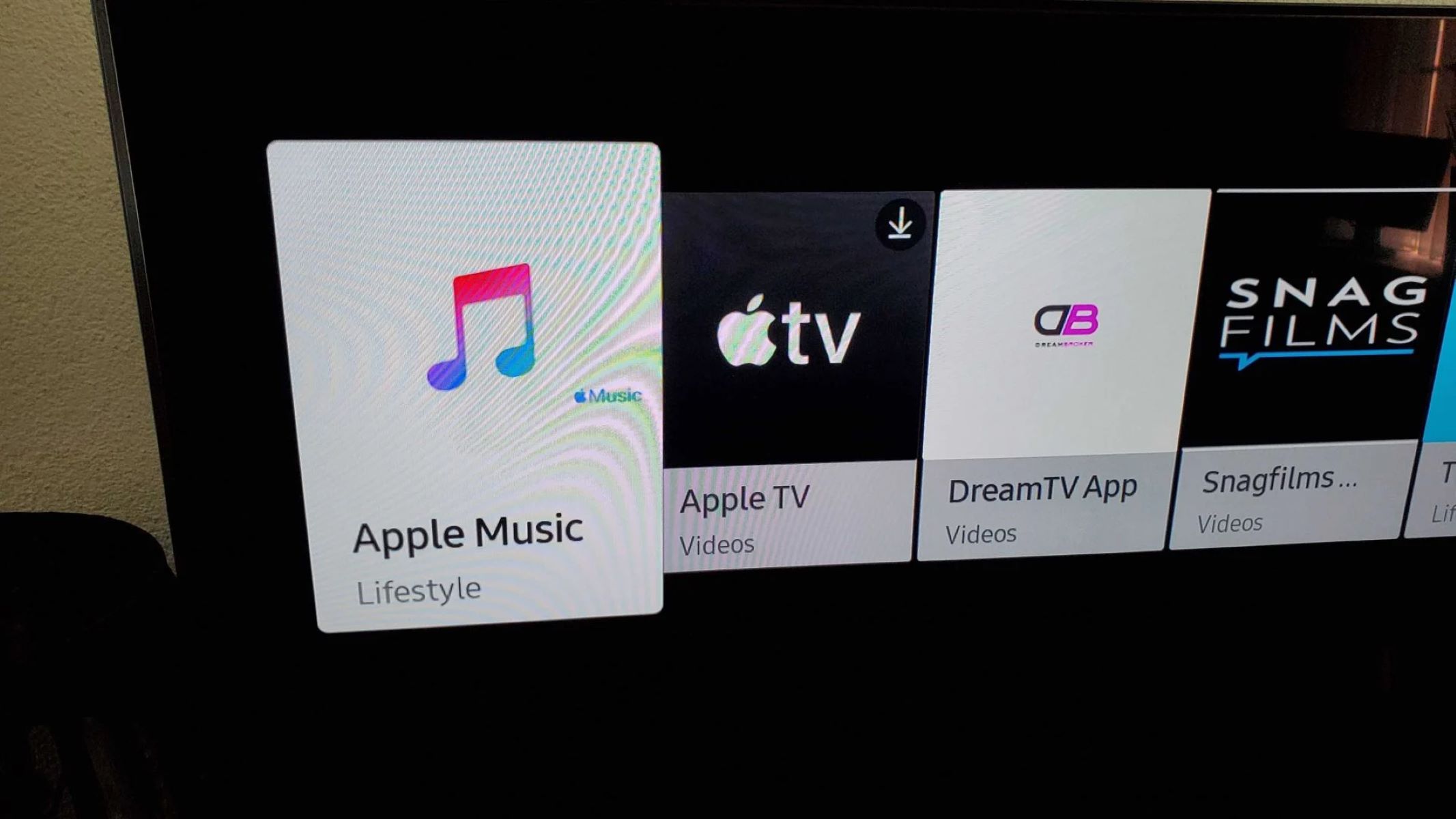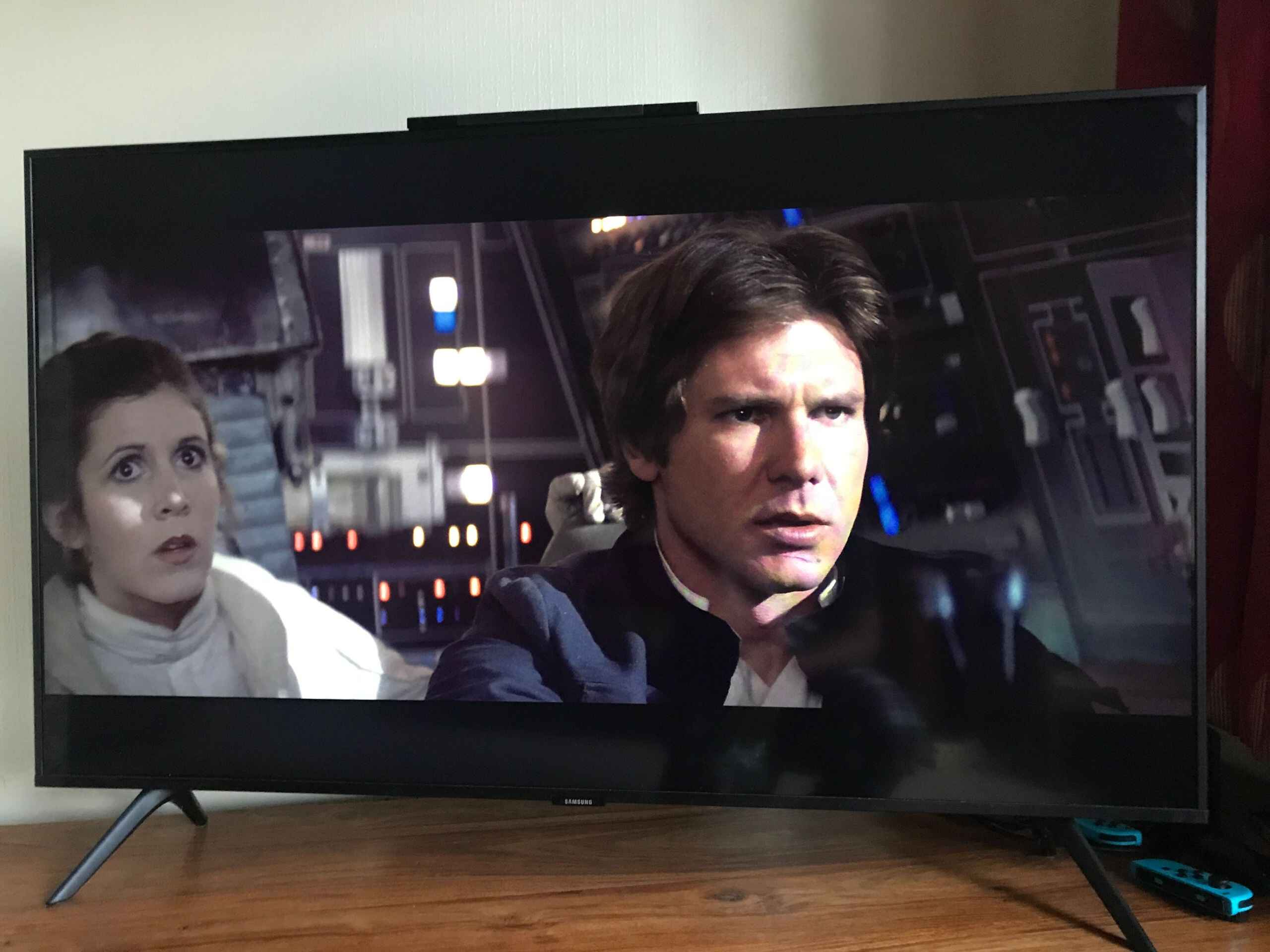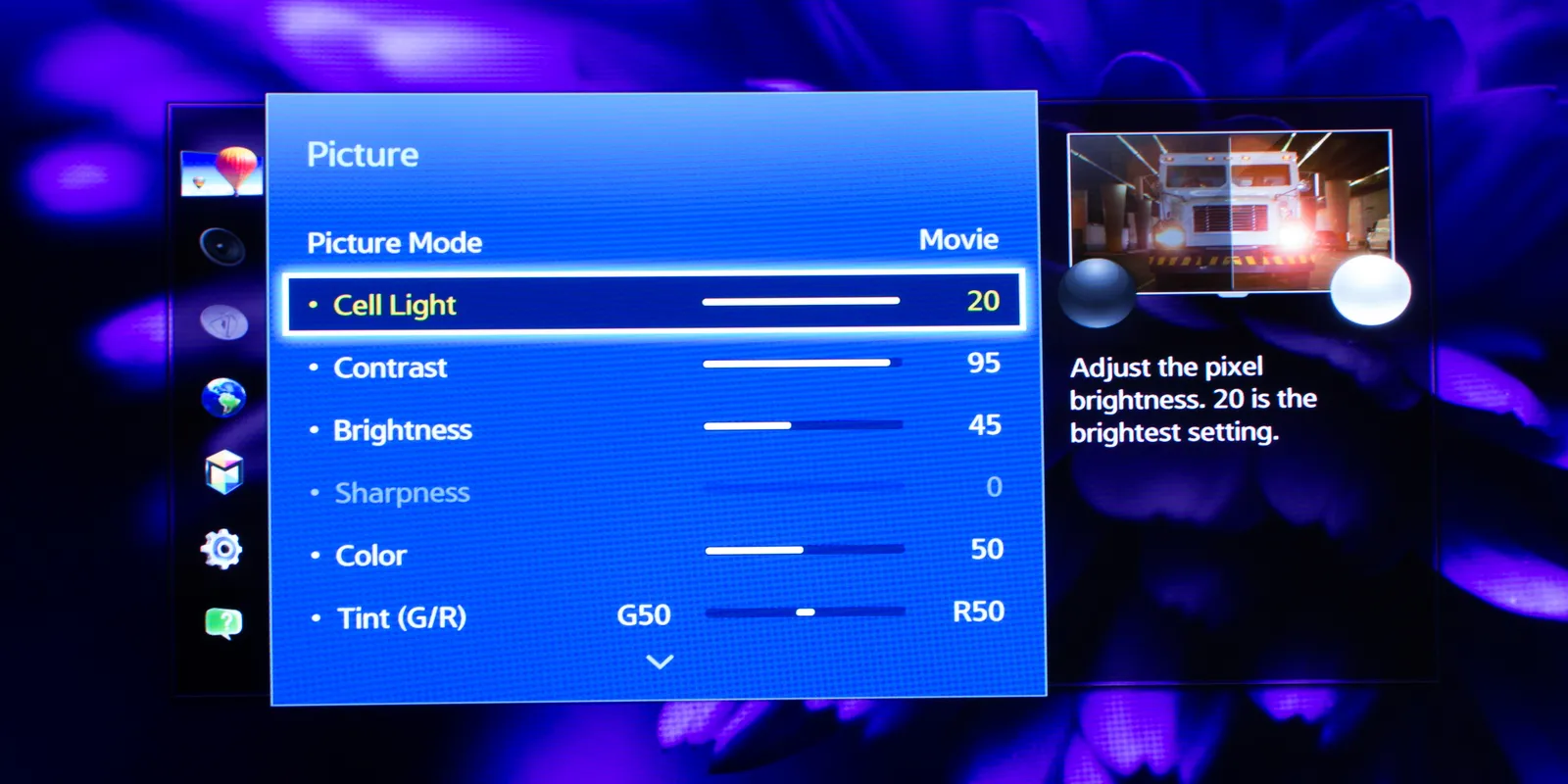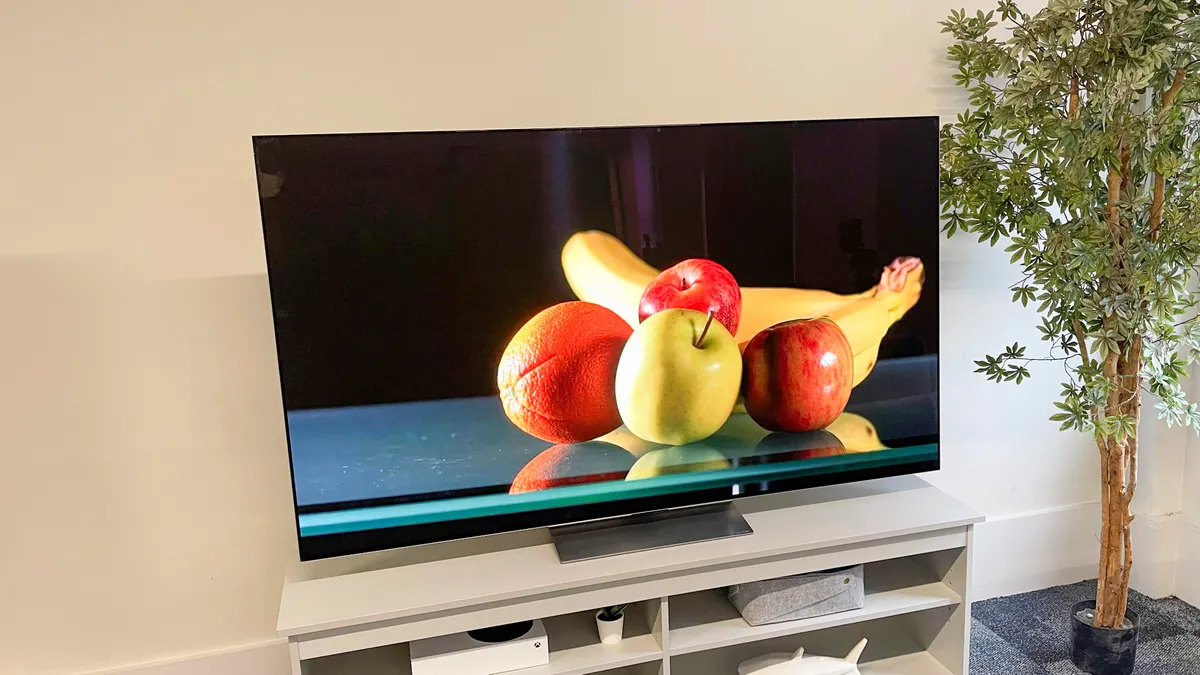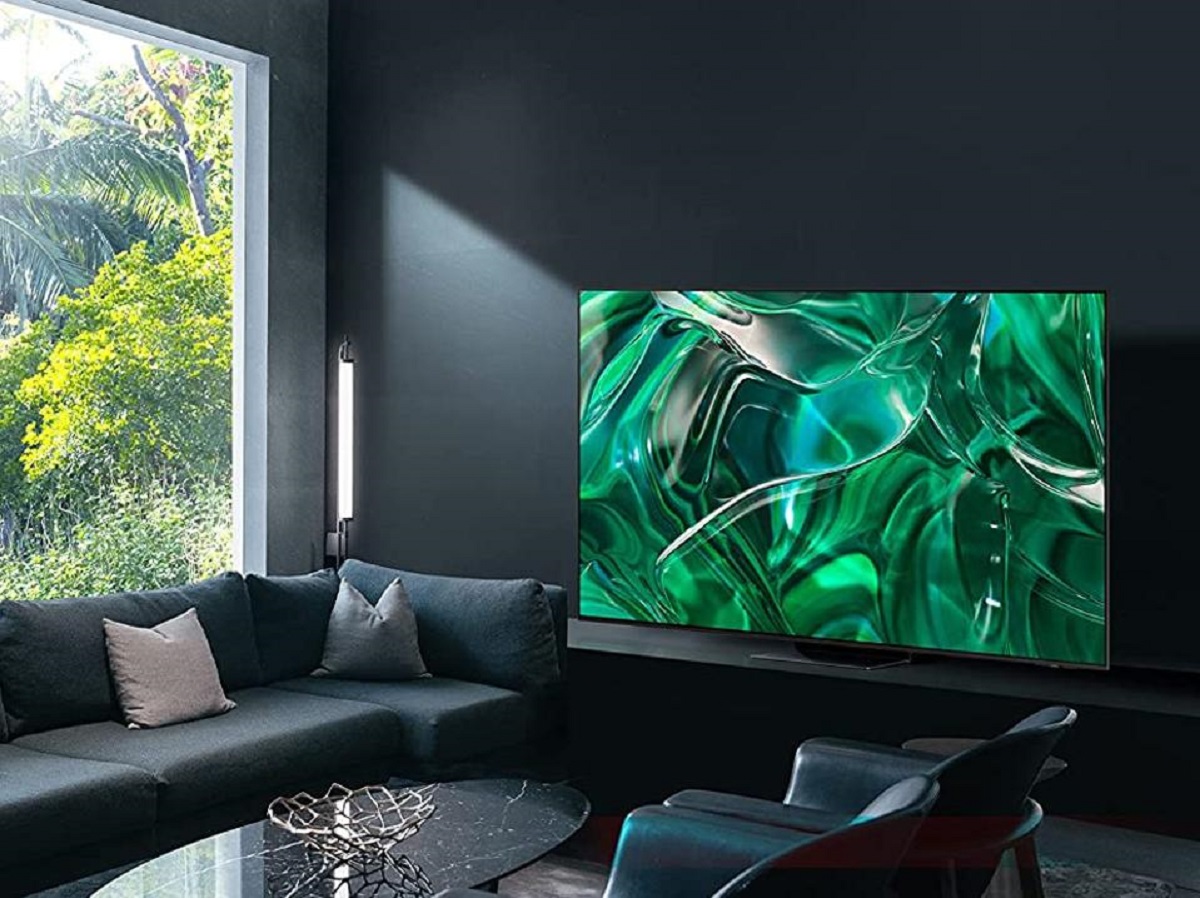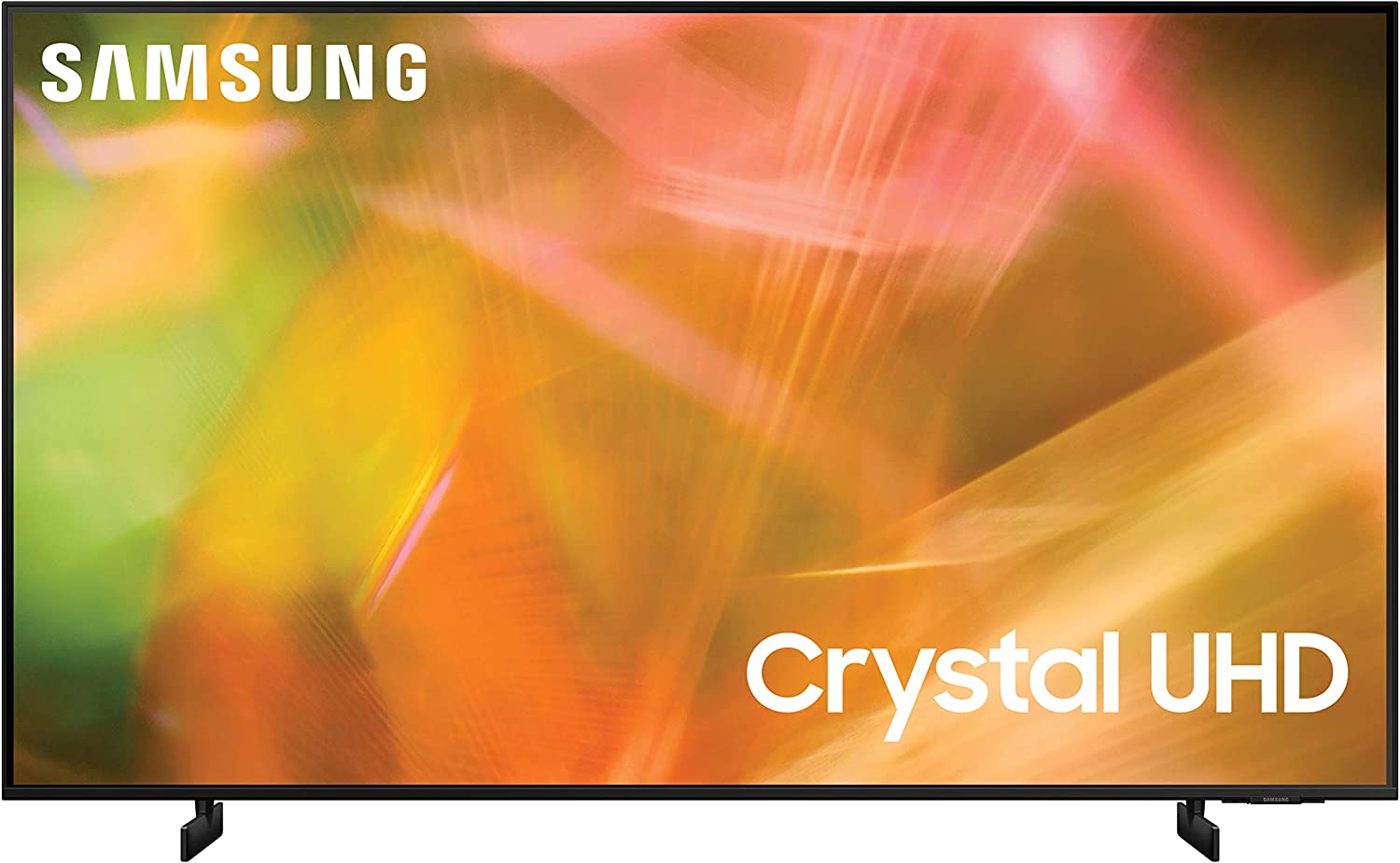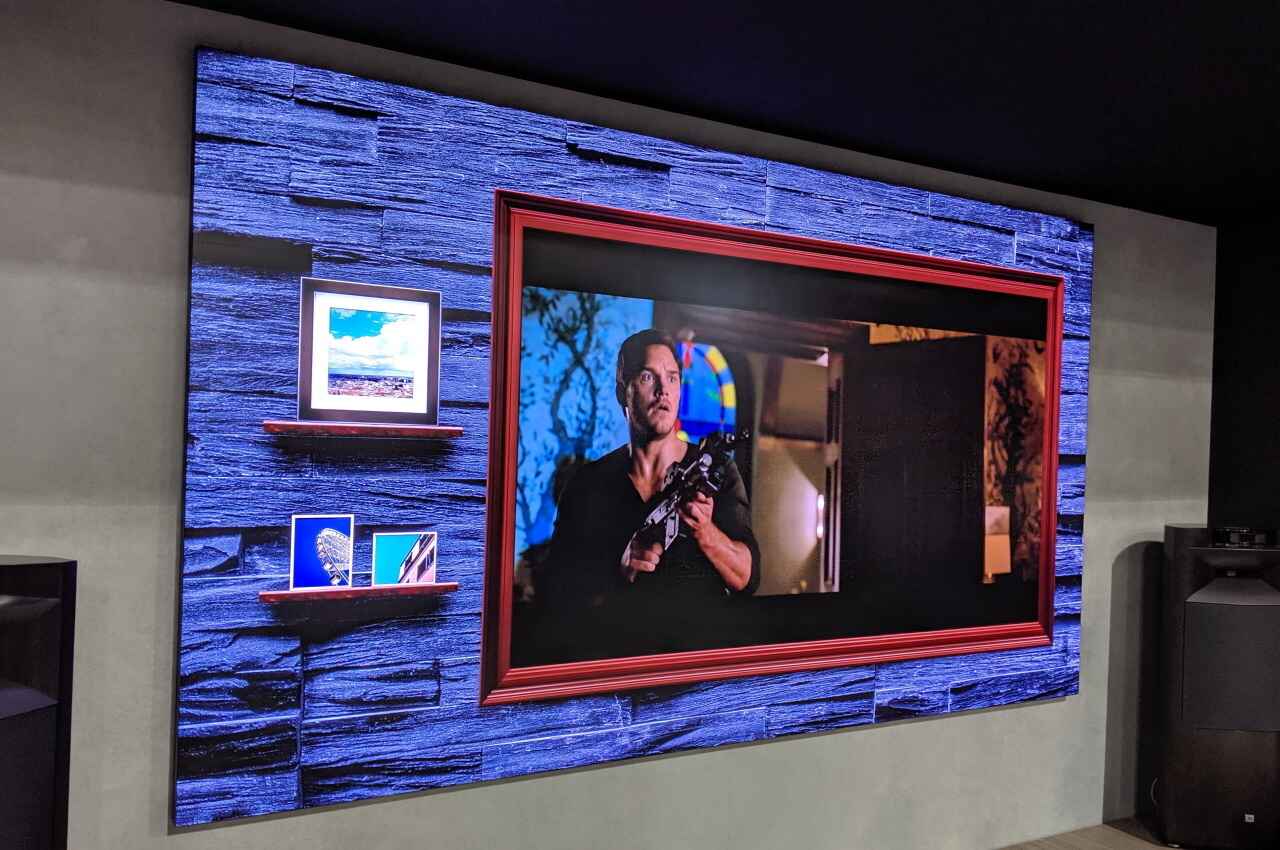Introduction
Welcome to our guide on why Apple TV may appear dark on Samsung TVs. Apple TV has become a popular accessory in many households, providing seamless access to a diverse range of entertainment content. However, it’s not uncommon for users to encounter issues with the display, such as a darker-than-normal picture, while using Apple TV on Samsung TVs.
A dark picture can be frustrating and diminish the viewing experience, especially when you’re trying to enjoy your favorite movies or TV shows. In this article, we will explore the possible reasons behind this problem and provide potential solutions to help you brighten up your Apple TV experience on your Samsung TV.
We will discuss whether the issue could be attributed to a firmware problem and explore the steps involved in adjusting picture settings on your Samsung TV. Additionally, we will look at enabling HDR (High Dynamic Range) on your Apple TV, updating the software, and using HDMI-CEC settings to ensure optimal performance. If necessary, we will also guide you on how to seek further assistance from Apple Support.
By the end of this guide, you will have a deeper understanding of why your Apple TV may appear dark on your Samsung TV and be equipped with the knowledge to troubleshoot and resolve the issue.
The Dark Side of Apple TV
While Apple TV offers a wide range of entertainment options and seamless streaming capabilities, some users have reported encountering a common issue – a dark or dim display on their Samsung TVs. This problem can be perplexing and significantly impact the overall viewing experience.
When the picture on Apple TV appears darker than usual, it can be frustrating, as colors may seem muted, details can be difficult to discern, and the overall picture quality may suffer. This can take away from the immersive experience of watching your favorite movies, TV shows, or playing games on the big screen.
One possible reason for this issue could be a compatibility problem between Apple TV and Samsung TVs. As different brands and models may have varying settings, configurations, and display technologies, it’s not uncommon for certain combinations to result in inconsistencies in picture quality.
It is important to note that this issue is not limited to a specific version of Apple TV or Samsung TV, as users have reported experiencing it across different generations and models. However, there are several potential solutions that can help address and alleviate this problem, allowing you to enjoy a vibrant and visually appealing picture on your Samsung TV while using Apple TV.
In the following sections, we will explore the possible reasons behind the dark picture on Apple TV when used with Samsung TVs and present practical solutions to resolve this issue. By applying these troubleshooting steps, you can ensure that your Apple TV experience on your Samsung TV is bright, vivid, and visually stunning.
Why Does Apple TV Appear Dark on Samsung TVs?
There are several possible reasons why Apple TV may appear dark on Samsung TVs. Understanding these factors can help us identify and address the issue effectively.
Firstly, it is essential to recognize that Apple TVs and Samsung TVs may have different default picture settings. Samsung TVs often prioritize energy-saving features by default, which can result in a darker picture. On the other hand, Apple TV may have its own picture settings that are not optimized for Samsung TVs, leading to a mismatch in display quality.
Another reason could be related to the dynamic range of content. Apple TV supports HDR (High Dynamic Range) content, which enhances the color accuracy, contrast, and overall visual experience. When HDR content is played on a non-HDR TV, such as some Samsung models, it can result in a darker picture as the TV may struggle to accurately reproduce the dynamic range.
Additionally, it is worth considering the HDMI cable and connection. An old or faulty HDMI cable may not be capable of transmitting the complete range of colors and brightness levels, leading to a dark or washed-out picture.
Lastly, firmware compatibility can also play a role in the issue. As both Apple TV and Samsung TVs receive periodic firmware updates, a lack of synchrony in these updates can lead to conflicts and display inconsistencies.
To address these potential reasons and improve the picture quality of your Apple TV on your Samsung TV, we will explore various troubleshooting steps in the following sections. These steps will help you adjust the picture settings on your Samsung TV, enable HDR on your Apple TV, update the software, and ensure a proper HDMI connection.
Is it a Firmware Issue?
When facing a dark picture issue with Apple TV on Samsung TVs, one possible reason to consider is a firmware compatibility issue. Firmware refers to the software that is embedded in electronic devices, including both Apple TV and Samsung TVs. It controls the functionality and settings of the device, including display quality and performance.
Both Apple and Samsung periodically release firmware updates to improve their products’ performance, add new features, and address bugs or compatibility issues. In some cases, a mismatch in firmware versions between your Apple TV and Samsung TV can result in display inconsistencies, including a dark picture.
To determine if a firmware issue is causing the dark picture problem, you can check for firmware updates on both your Apple TV and Samsung TV. On your Apple TV, go to Settings > System > Software Updates to see if any updates are available. Similarly, on your Samsung TV, navigate to Settings > Support > Software Update to check for any available updates.
If there are updates available for either your Apple TV or Samsung TV, it is crucial to install them. Firmware updates are designed to address various issues and improve compatibility between different devices. By keeping your devices up to date, you can ensure that they are functioning optimally and potentially resolve any dark picture issues caused by firmware inconsistencies.
If the firmware on both devices is already up to date, and you are still facing a dark picture problem, then it is worth exploring other troubleshooting steps to address the issue. The next sections will cover various adjustments and settings that can help improve the picture quality of Apple TV on your Samsung TV.
Adjusting Picture Settings on Samsung TVs
One of the first steps to address the dark picture issue on your Samsung TV when using Apple TV is to optimize the picture settings on your television. By adjusting these settings, you can enhance the overall brightness, contrast, and color accuracy, ultimately improving the visual quality of your Apple TV experience.
To access the picture settings on your Samsung TV, navigate to the Menu or Settings option on your remote control. From there, you should be able to find the Picture or Display section, which allows you to customize various picture settings.
Here are a few key settings to consider adjusting:
- Brightness: Increase the brightness level to improve overall screen brightness. However, be cautious not to set it too high, as it may result in an overly bright or washed-out picture.
- Contrast: Adjust the contrast level to optimize the ratio between dark and light areas of the picture. Increasing the contrast can help improve the overall image clarity and depth.
- Backlight: Increase the backlight setting to enhance screen brightness. This setting controls the intensity of the TV’s backlight, which directly affects the overall brightness of the display.
- Color Temperature: Experiment with different color temperature presets (such as Warm, Standard, or Cool) to find the one that provides a balanced and natural color reproduction.
Additionally, it may be worth exploring other advanced picture settings, such as gamma, sharpness, and motion settings, to further refine the picture quality according to your preferences.
Remember to make incremental adjustments and observe the changes in the picture quality after each adjustment. This way, you can find the optimal settings that provide a brighter and more accurate picture without sacrificing other visual elements.
By fine-tuning the picture settings on your Samsung TV, you can significantly improve the display quality of Apple TV and mitigate the issue of a dark picture.
Enabling HDR on Apple TV
If your Samsung TV supports HDR (High Dynamic Range) technology, enabling HDR on your Apple TV can significantly enhance the picture quality and resolve the issue of a dark display. HDR allows for a broader range of colors, improved contrast, and greater detail in both bright and dark scenes.
To enable HDR on your Apple TV, follow these steps:
- On your Apple TV, go to the Home screen and select “Settings”.
- In the Settings menu, choose “Video and Audio”.
- Under the Video and Audio settings, select “Format”.
- If your Apple TV detects HDR capability on your Samsung TV, it will display available HDR formats, such as HDR10 or Dolby Vision. Select the desired HDR format.
- Once you have selected the HDR format, your Apple TV will automatically switch to HDR mode, optimizing the display for HDR content.
Note that enabling HDR on your Apple TV will only work if your Samsung TV supports HDR. If your Samsung TV does not have HDR capabilities, this option may not be available in the settings.
By enabling HDR on your Apple TV and ensuring that your Samsung TV is capable of HDR playback, you can enjoy a brighter and more visually stunning picture, as HDR content is specifically created to make the most of the TV’s dynamic range.
However, if the dark picture issue persists even after enabling HDR and adjusting the picture settings, we will explore further troubleshooting steps in the following sections to help you resolve the problem and restore optimal picture quality on your Samsung TV.
Updating Apple TV Software
Regularly updating the software on your Apple TV can help resolve issues, improve performance, and ensure compatibility with your Samsung TV. Outdated software versions may contain bugs or glitches that can affect the display quality, including the problem of a dark picture.
To update the software on your Apple TV, follow these steps:
- On your Apple TV, go to the Home screen and select “Settings”.
- In the Settings menu, choose “System”.
- Under the System settings, select “Software Updates”.
- If an update is available for your Apple TV, you will see an option to download and install the update. Select this option to initiate the software update process.
- Allow your Apple TV to complete the update installation, which may take some time depending on the size of the update.
It is important to keep your Apple TV software up to date to ensure optimal performance and compatibility with your Samsung TV. Updating the software can address any known issues or bugs that may be causing the dark picture problem.
If you have already updated your Apple TV software to the latest version and the dark picture issue persists, continue following the troubleshooting steps outlined in the upcoming sections to further address and resolve the problem.
Using HDMI-CEC Settings
HDMI-CEC (Consumer Electronics Control) is a feature that allows devices connected through HDMI cables to communicate with each other and control various functions using a single remote. Utilizing the HDMI-CEC settings can help resolve compatibility issues between your Apple TV and Samsung TV, potentially addressing the problem of a dark picture.
To enable HDMI-CEC on your Samsung TV, follow these steps:
- On your Samsung TV, go to the Menu or Settings option using your remote control.
- Find the System Preferences or Setup menu and navigate to the HDMI-CEC settings.
- Toggle the HDMI-CEC feature to enable it. The specific name for this feature may vary depending on the model of your Samsung TV (e.g., Anynet+ for Samsung TVs).
Once HDMI-CEC is enabled on your Samsung TV, you can check if the issue of a dark picture is resolved. HDMI-CEC allows for better communication and synchronization between devices, ensuring that your Apple TV and Samsung TV are working together seamlessly.
Furthermore, HDMI-CEC can enable automatic input switching, which means that when you turn on your Apple TV, your Samsung TV will automatically switch to the correct HDMI input. This eliminates the need for manually selecting the input source and reduces the chances of encountering display-related issues.
If you have enabled HDMI-CEC on your Samsung TV and the dark picture problem persists, you can try disabling and re-enabling the feature. Sometimes, the settings may need to be refreshed for proper communication between devices.
While HDMI-CEC can contribute to resolving compatibility issues, it is worth noting that the feature’s name and availability may vary across different TV manufacturers and models. Some brands may use different names for HDMI-CEC, such as Bravia Sync (Sony) or Simplink (LG). Consult your Samsung TV’s user manual or contact the manufacturer’s support if you are unsure about HDMI-CEC availability and functionality on your specific model.
Continue reading the next section for further troubleshooting steps to address the dark picture issue on your Apple TV and Samsung TV.
Contacting Apple Support
If you have followed the troubleshooting steps mentioned earlier and are still experiencing a dark picture issue on your Samsung TV while using Apple TV, it may be time to seek assistance from Apple Support. The technical experts at Apple can provide personalized guidance and offer solutions tailored to your specific situation.
Before contacting Apple Support, ensure that you have gathered relevant information about your Apple TV and Samsung TV, such as the model numbers, software versions, and a detailed description of the issue you are facing. This information will help the support team understand your situation better and provide more effective assistance.
There are several ways to contact Apple Support:
- Online Support: Visit the Apple Support website and navigate to the Apple TV section. Here, you will find various support resources, including articles, guides, and community forums to troubleshoot common issues.
- Phone Support: Use the Apple Support phone number specific to your region or country to directly speak with a support representative. They will guide you through the troubleshooting process and provide further assistance based on your individual needs.
- Apple Store: If you prefer an in-person approach, you can visit an Apple Store near you and speak with a Genius Bar technician. They will assess the issue and provide appropriate solutions or recommendations.
When contacting Apple Support, be prepared to explain the steps you have already taken to troubleshoot the dark picture issue. This will help the support team understand the scope of the problem and provide more targeted assistance.
Remember, Apple Support is dedicated to helping you resolve any issues you may encounter with your Apple devices, including Apple TV. They have the expertise to address complex technical issues and can guide you through the process of rectifying the dark picture problem on your Samsung TV.
If the issue remains unresolved even after seeking assistance from Apple Support, consider reaching out to Samsung’s support as well. They may provide additional insights or specific troubleshooting steps for your Samsung TV model.
By reaching out to Apple Support and exploring all available resources, you increase the chances of finding a satisfactory solution to the dark picture issue on your Apple TV and Samsung TV.
Conclusion
The dark picture issue on Apple TV when used with Samsung TVs can be frustrating, but there are several potential solutions to address this problem. We have explored possible reasons behind this issue, such as different picture settings, HDR compatibility, firmware inconsistencies, and HDMI-CEC settings.
By adjusting the picture settings on your Samsung TV, such as brightness, contrast, and backlight, you can improve the display quality and enhance the overall picture brightness. Enabling HDR on your Apple TV, if supported by your Samsung TV, can also significantly enhance the visual experience by providing a wider range of colors and improved contrast.
Updating the software on your Apple TV and Samsung TV ensures that you have the latest firmware versions, resolving any compatibility issues that may affect picture quality. Additionally, using HDMI-CEC settings can help improve communication between your devices and automatically switch to the correct input source.
If you have followed these troubleshooting steps and are still experiencing the dark picture issue, it may be time to contact Apple Support. Their technical expertise can provide personalized assistance and guide you through further troubleshooting steps specific to your situation.
Remember, every Apple TV and Samsung TV model may have unique settings and requirements, so it’s essential to refer to the user manuals and consult the respective support channels for your specific devices.
By implementing these solutions and seeking proper assistance, you can overcome the dark picture issue and enjoy a vibrant, visually appealing Apple TV experience on your Samsung TV.







